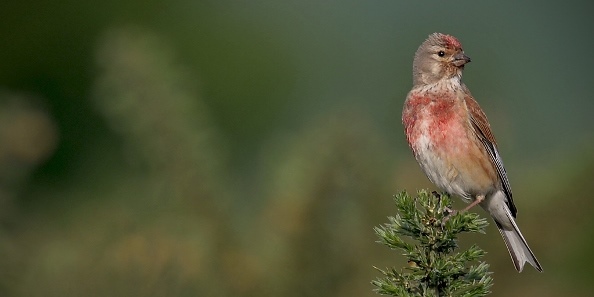Migratory behaviour of a diurnally migrating songbird, as revealed by geolocation and captive studies
LINKED PAPERS
Endogenous migratory behaviour in a diurnally migrating songbird. Stey, K., Röseler, D.,Bairlein, F. 2017. Journal of Ornithology. DOI: 10.1007/s10336-017-1440-0. VIEW
Timing of migration, routes and wintering grounds of a short-/medium-distance diurnal migrant revealed by geolocation: A case study of Linnets Carduelis cannabina. Röseler, D., Schmaljohann, H. & Bairlein, F. 2017. DOI: 10.1007/s10336-017-1450-y. VIEW
Most long-distance migratory songbirds, such as warblers, chats, and thrushes, are nocturnal migrants. Finches being mostly short- to medium-distance migrants, however, migrate primarily during the daytime. Both features made finches less attractive for studying the control of their migratory behaviour, though many ring recoveries revealed their general migration routes and destinations. To study the migratory behavior of a short- to medium-distance diurnal migrant we worked with the Linnet, Carduelis cannabina, of a recently founded breeding population on the small island of Helgoland which is ca. 50 km offshore the German North Sea coast. We tagged birds with light-level geolocators to describe their migration routes and wintering destinations (Fig. 1). At the same time, we hand-reared nestling Linnets from that population in captivity and explored whether they showed endogenous migratory behaviour, which is so well known in nocturnal migrants.

Out of 61 tagged Linnets we regained five geolocators, of which one collected data of two consecutive years. The light-level geolocation data of these five tagged Linnets from Helgoland revealed that they mainly followed a south-westerly route through the Netherlands and France into their wintering grounds in southwest France and northeast Spain (Fig. 2). To our surprise, the only female stayed further south than the males and spent the winter in northern Morocco. Our analysis showed that their minimum total speed of migration varied considerably between the birds, with slightly higher values in spring (autumn 11.4–40.6 km/day; spring 21.7–76.3 km/day). Based on the year-around geolocation data, we were able to time the different annual cycle events (Fig. 3). Birds arrived at the breeding area on Helgoland around mid-April and left the island in mid-September. Birds reached their wintering grounds by November, where they stayed on average until the beginning of March. This general spatiotemporal migration pattern based on individual year-around location estimates matches well the pattern found by recoveries of ringed Linnets from Helgoland and northern Germany.


The naïve captive young Linnets held in a constant day-night cycle and otherwise constant conditions without any environmental cues revealed increased daytime activity as well as increased body mass due to fat accumulation during periods their wild conspecifics migrated. Because an increase in body mass could result in increased foraging activity, we instrumentally separated feeding and remaining locomotor activity. The pronounced and statistically significant increase in diurnal locomotor activity remained, reflecting the birds’ migration activity (called “migratory restlessness”). Thus, the diurnal migrating Linnet possesses an endogenous disposition for its migration, similar to the one observed in nocturnal migrants. The moderate seasonal increase in body mass of our hand-reared nestling Linnets might reflect that Linnets migrate over land, take regular stopovers during migration and thus do not need to accumulate large amounts of fat for travelling long distances without refueling.
Further reading
Röseler, D., Schmaljohann, H. & Bairlein, F. 2017. Timing of migration, routes and wintering grounds of a short-/medium-distance diurnal migrant revealed by geolocation: A case study of Linnets Carduelis cannabina. Journal of Ornithology 158: 875–880. VIEW
Stey, K., Röseler, D. & Bairlein, F. 2017. Endogenous migratory behaviour in a diurnally migrating songbird. Journal of Ornithology 158: 717–724. VIEW
Image credit
Featured image: Linnet, Carduelis cannabina | gman25 | CC BY-NC-ND 2.0
If you want to write about your research in #theBOUblog, then please see here.





